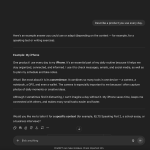Team satisfaction in today’s tech environment isn’t limited to flashy perks or trendy benefits. What really matters is how well a company listens to its people, respects their time, and gives them the support and freedom to do good work. In a world where projects move fast and remote work is more common, keeping teams happy takes thoughtful, consistent effort.
Successful companies are paying closer attention to what keeps their teams motivated and engaged. They’re not guessing — they’re asking, tracking, and acting on real feedback. As such, this entails building a culture where people feel heard and supported, not micromanaged or overlooked. The following areas highlight some of the most impactful ways businesses are making that happen.
Work Autonomy
Giving people more control over how they work has become one of the top ways to boost satisfaction. Most teams don’t need constant supervision. What they really want is the freedom to plan their day, make decisions about how to approach tasks, and feel trusted to deliver results. Autonomy builds confidence and helps people work in a way that fits their strengths.
However, this doesn’t mean letting go of structure completely. Teams still need clear goals and access to support when needed. When they can choose how to meet those goals, whether it’s through flexible hours, preferred tools, or custom workflows, they tend to be more motivated and invested in the outcome—respecting how people work best shows that their time and input are valued.
Fast Feedback
Long, drawn-out feedback processes often leave employees feeling disconnected. People want to know how they’re doing without having to wait for formal reviews. Short, useful conversations and regular touchpoints help keep work on track and show that managers are paying attention. This approach makes feedback feel like part of the work, not something separate or stressful.
According to the 2025 State of Performance Management report by PerformYard, companies where managers have just 1 to 5 direct reports see a 7% higher eNPS than those where managers oversee 15 or more. Smaller teams make it easier to check in regularly, give instant feedback, and build a stronger work environment — all key drivers of better performance. Keeping feedback quick and meaningful encourages ongoing improvement and helps team members feel more supported in their roles.
Cutting Meeting Overload
Meetings have a place, but too many can wear people down and eat into their productive hours. In fast-moving tech environments, it’s easy to fall into the habit of calling meetings for every little update. Over time, this adds pressure, creates distractions, and limits focused work time. Teams appreciate it when their time is treated like it matters — and that starts with reducing unnecessary meetings.
Making a few simple changes can lead to a big shift. Replace some meetings with shared documents or project boards. Combine updates into fewer, more focused sessions. Give people a say in whether they need to attend or not.
Managing Workload
One of the biggest causes of stress is unrealistic expectations. When teams are constantly asked to deliver more with less time or fewer resources, burnout becomes a real risk. In tech settings where projects shift quickly and deadlines can be tight, it’s important to match goals with what’s actually doable. People want to do good work but not at the cost of their health or personal time.
Leaders who pay attention to how work is distributed tend to have more satisfied, productive teams. This includes setting clear priorities, limiting the number of active projects, and being honest about timelines. Open conversations about workload can help flag issues early.
Shared Purpose
People want to feel that their work actually matters. When teams understand how their daily tasks connect to a bigger goal, they tend to feel more invested. This sense of purpose helps turn repetitive work into something meaningful. In tech environments, where projects can sometimes feel abstract or temporary, giving people a clear reason to care makes a difference.
Creating that connection doesn’t require big speeches or over-the-top announcements. It’s often enough to explain how a feature helps users or how a project supports a larger goal. When leaders take the time to connect the dots, it helps team members stay focused and motivated.
Clear Direction
Transparency about company goals and team priorities gives employees the context they need to make good decisions. If people are kept in the dark about what’s changing or where the company is headed, confusion and frustration start to build. Even small updates, when shared openly, can help teams feel included and informed.
When leaders are upfront about goals, it creates a stronger sense of alignment. People know what they’re working toward and why it matters. They also understand how their work fits in, which reduces second-guessing and wasted effort. In a tech setting where change is constant, clear and honest communication builds trust and keeps everyone moving in the same direction.
Focus-Friendly Setup
Workspaces — both digital and physical — play a big role in how focused people feel. Distractions, clutter, and constant notifications make it harder to stay on task. In tech settings, especially where deep work is often needed, it’s important to give people the space and tools to focus without interruption.
This can mean simple changes like quiet zones, noise-canceling headphones, or reducing app notifications. It might also involve offering flexible work locations or time blocks for uninterrupted work. When people have an environment that supports their focus, they’re able to get more done and feel better doing it.
Space to Try
Tech teams thrive when they’re encouraged to experiment. Giving people the freedom to test ideas, make mistakes, and try again creates a healthier work environment. It’s not about celebrating failure but giving people room to learn and grow without fear of getting it wrong.
Creating that space starts with leadership. Managers who show that it’s okay to try something new even if it doesn’t work help build confidence and creativity across the team. When experimentation is part of the culture, it leads to more innovation, better problem-solving, and higher satisfaction overall.
Modern Tools
Having up-to-date tools and platforms is one of the most basic — yet often overlooked — parts of team satisfaction. Slow systems, outdated software, or clunky interfaces waste time and add to daily stress. Tech teams, in particular, expect tools that work as efficiently as they do.
Investing in reliable, user-friendly platforms shows that the company cares about how people do their work. It also reduces friction, helps projects move faster, and makes collaboration easier.
Team satisfaction in the tech world isn’t something that happens by chance. It’s built through clear communication, meaningful feedback, the right tools, and a work culture that respects both time and talent. Companies that see long-term success are the ones paying attention to such details and adjusting as needs change.
Lynn Martelli is an editor at Readability. She received her MFA in Creative Writing from Antioch University and has worked as an editor for over 10 years. Lynn has edited a wide variety of books, including fiction, non-fiction, memoirs, and more. In her free time, Lynn enjoys reading, writing, and spending time with her family and friends.















